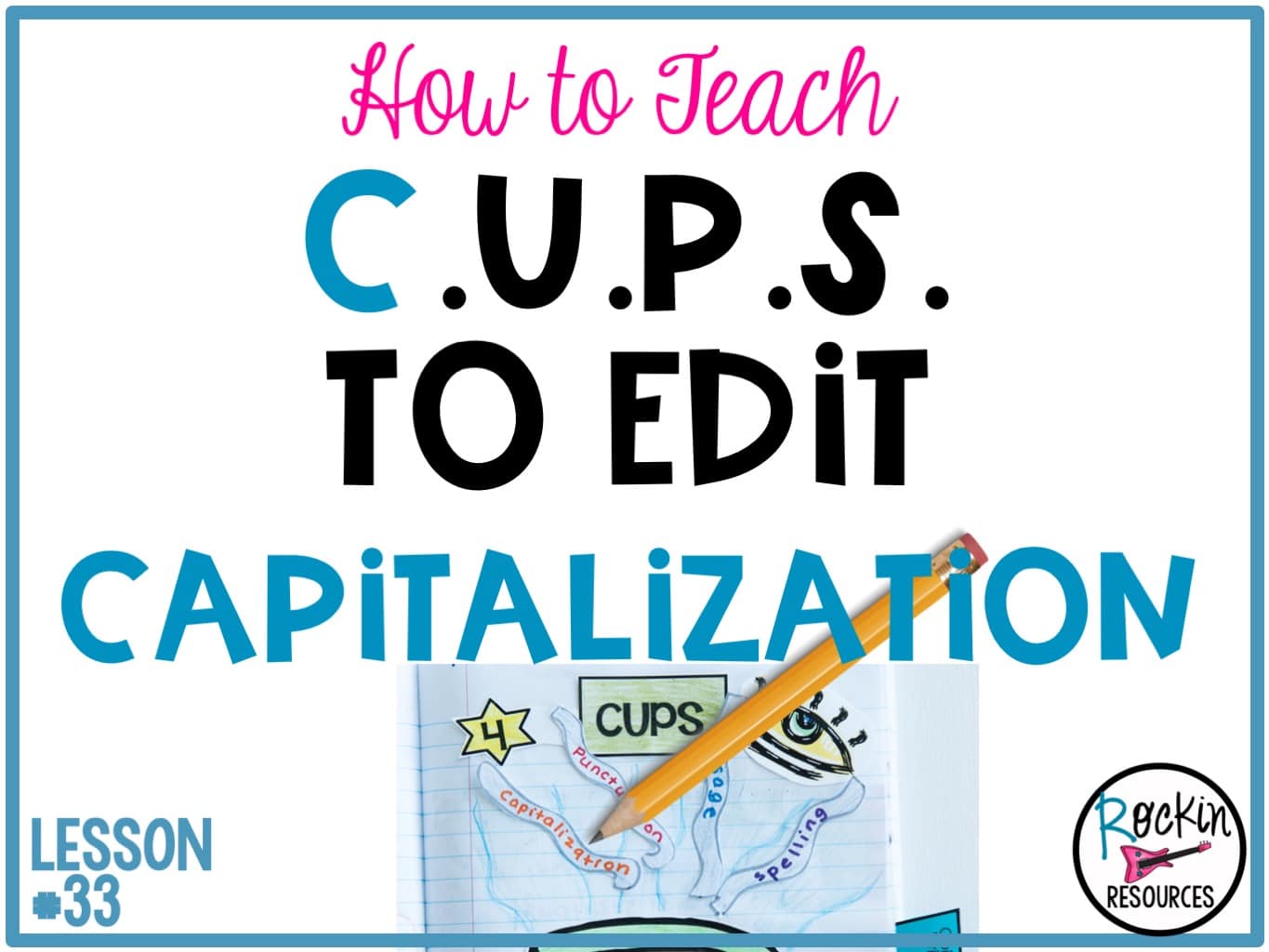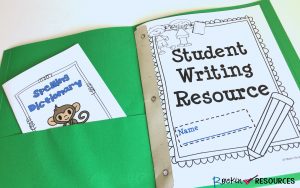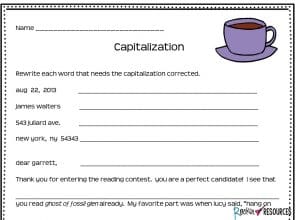Do your students need help learning rules for capitalization and symbols for proofreading in their writing? This post will review basic capitalization rules needed for an upper elementary curriculum, provide ideas for teaching them, and symbols when proofreading. The writing mini lesson is part of a series of lessons designed for instructional scaffolding in writer’s workshop. It is part of the CUPS (Capitalization, Usage, Punctuation, Spelling) for editing acronym where C stands for Capitalization. Read on for ideas!
Students need to have a basic foundation of mechanics in writing. Capitalization is one of them. There are several steps within a mini lesson to help students get a deep understanding of capitalization.
1. TEACH
Teach students the capitalization rules for their grade level. Place it on an anchor chart or poster in the room or writing center. In Grades 3-5 they will need to know:
a. Capitalize the beginning of a sentence. Ex. He rode the bike.
b. The pronoun “I” always needs to be capitalized. Ex. Did I see you at the park?
c. Proper nouns need to capitalized. Ex. Jan, Golden Gate Bridge, New Jersey, Wednesday
d. Titles need to be capitalized. Ex. Tales of the Fourth Grade Nothing
e. The first word within a quote needs to be capitalized. Ex. Jose asked, “Why is the sky blue?”
f. The greeting and closing of a friendly letter needs to be capitalized. Ex. Dear Patricia, Sincerely,
2. MENTOR TEXT
Choose any narrative text to point out capitalization in a story. Make sure it has dialogue so you can show your students that rule too!
3. MODEL
Model editing the class story with proper capitalization. If the rough draft already has correct capitalization, take a paragraph or a sample and make mistakes prior to the lesson. Use that paragraph or sample and model showing the students where to capitalize. Make sure to talk out loud as you correct them. You can say, “I’m going to capitalize the i because that is one of our rules. I always needs to be capitalized.” What type of symbol should you use when editing capital letters? Three lines go under a lowercase letter that needs an uppercase letter. A slash is used to draw through an uppercase letter that needs to be lowercase.
4. TAKE NOTES
Take notes on capitalization. Students should have a place to use as a reference when editing in the future. You can include it in a student resource folder for groups, centers, or homework too. If you have one of our interactive writing notebooks, a student resource guide is included.

5. PRACTICE
When students practice, it gives them a variety of examples. It helps with students’ memory in the future when they come across the same type of word that needs capitalized.

6. APPLY
Students should apply what they learned from this lesson to their own rough draft. Encourage students to be the detective and find capitalization errors! As mentioned in the previous lesson, use magnifying glasses to motivate students to be detectives!
7. SHARE
Take a minute to have students share where they found capitalization errors in their own writing. It may put a spark or thought into a reluctant editor!
I hope these ideas help you when teaching capitalization!
Check out my FREE writing masterclass! CLICK HERE
LAST LESSON: WRITING MINI LESSON #32 CUPS FOR EDITING
NEXT LESSON: WRITING MINI LESSON #34 CUPS FOR EDITING- USAGE
CLICK HERE FOR THE FULL LIST OF WRITING MINI LESSONS
This lesson is also included in the STEP-BY-STEP WRITING® Program with mini-lessons designed to scaffold through the writing process. Writing units included are sentence structure, paragraph writing, narrative writing, opinion writing, and informative writing. See what is included in the image below and click on it to learn more about them! You will turn your reluctant writers into ROCKSTAR WRITERS™!
“My grade level used this last year and our state assessment scores improved greatly in writing!!! Other grades are using your units! I am soooo excited to see what the kiddos remember from year to year since it spirals. It’s helped them TONS and with our population, we always struggle to find successful resources. We love them!!!” – Megan








